Introduction to the Fastest Cars Records
This list captures all production cars that have broken the previous speed records of their era, thus claiming the title of the fastest production car at their time.
First, let’s define a production car. A production car must be mass produced for the public, drivable on conventional roads, and meet a minimum production quota. This definition excludes one off cars, prototypes, modified vehicles, and those not legal for road use.

We begin our journey in 1949 a year we consider as the starting point because verifying records set before World War II poses significant challenges. Despite this, some cars listed before the 1980s also have difficult to confirm and officially validate records. This is due to the less reliable and less formalized verification processes of the past. Consequently, we have had to rely on judgments made by magazines from those times.
Today, the competition among manufacturers to hold the title of the fastest production car has intensified, basically prompting the adoption of strict measures and rules for record validation, including the following:
Criteria for Car Speed Record Certification
Historically speed tests were conducted in a more informal manner, often relying on unreliable verification methods without official entities to certify the records. This lack of precision made it hard to guarantee their authenticity.
Now, technological progress and intense rivalry among manufacturers have revolutionized the rules, leading to a clear division between cars included and excluded from our upcoming list, based on their adherence to modern standards.
The rules are straightforward:
- A vehicle must be in a minimum production run, not a prototype or a one off. Meaning the car cannot have modifications over the standard production model, which includes tweaks in electronics, as well as any alterations to the engine or aerodynamics.
- Conducting the speed test in both directions is mandatory. So we exclude one direction tests from our list because a tailwind could unfairly enhance the vehicle’s speed.
- For cars from the 1990s onwards, a specialized entity must verify the record. Then tests conducted solely by a magazine or the manufacturer do not qualify.
Summary Table of Car Speed Records
Before delving into the list, we want to highlight that our selection of cars for this table reflects our own opinion and interpretation of compliance with the established criteria. We have approached older models, particularly those from before the 1990s, with some leniency to recognize the different standards of their time.
Otherwise, some of today’s most famous models, despite their prominence are omitted from our list. The reason? because some of these models have generated controversy by not adhering to the current strict rules established and multiple authorized entities question their legitimacy.
That said, let’s move on to see the cars that have passed our verification and that are proud to be on our list are the following:
| MODEL | RECORD YEAR | TOP SPEED (MPH) | TOP SPEED (KMH) |
|---|---|---|---|
| Jaguar XK120 | 1949 | 126 mph | 203 kmh |
| Mercedes-Benz 300SL | 1955 | 150.7 mph | 242.5 kmh |
| Aston Martin DB4 GT | 1959 | 152 mph | 244.6 kmh |
| Iso Grifo GL 365 | 1963 | 161 mph | 259 kmh |
| AC Cobra MK III 427 | 1965 | 165 mph | 266 kmh |
| Lamborghini Miura P400 | 1967 | 171 mph | 275 kmh |
| Ferrari 365 GTB/4 Daytona | 1968 | 174 mph | 280 kmh |
| Lamborghini Countach LP500S | 1982 | 182 mph | 293 kmh |
| Ruf BTR | 1983 | 190 mph | 305 kmh |
| Porsche 959 | 1986 | 198 mph | 319 kmh |
| Ferrari F40 | 1987 | 201mph | 324 kmh |
| Ruf CTR | 1987 | 213 mph | 342.8 kmh |
| McLaren F1 | 1998 | 240.1 mph | 386.4 kmh |
| Bugatti Veyron EB 16.4 | 2005 | 253.8 mph | 408.4 kmh |
| SSC Ultimate Aero | 2007 | 256.1 mph | 412.2 kmh |
| Bugatti Veyron 16.4 Super Sport | 2010 | 267.9 mph | 431 kmh |
| Koenigsegg Agera RS | 2017 | 277.9 mph | 447.2 kmh |
Record-Breaking Production Cars Through the Years
Jaguar XK120 – 1949
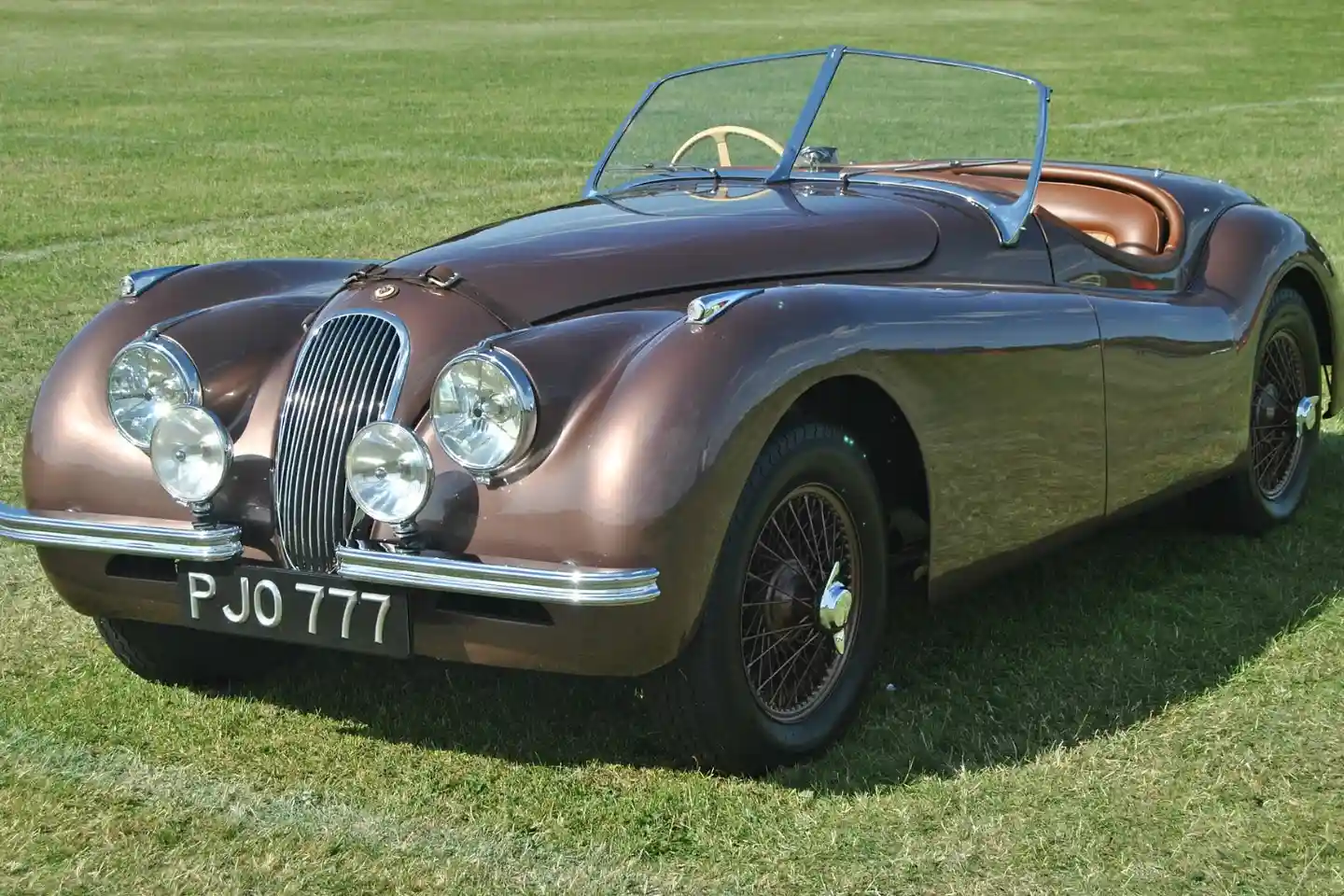
Loco Steve.- Model: Jaguar XK120
- Year: 1949
- Top speed (mph): 126 mph
- Top speed (kmh): 203 kmh
The Jaguar XK120 distinguished itself as one of fastest cars by setting an important record in 1949. While it achieved two speed records, for our list of the world’s fastest cars, we will focus on its performance and record as a production car.
Thanks to a 3.5L engine, the Jaguar XK120 driven by a professional driver, reached a speed of 203 kmh (126 mph) at the Montlhery circuit in France. Because of this achievement, the XK120 was marked as the fastest production car of its era.
In addition, another speed record was set by driving a modified XK120 to reach 132.6 mph (213.4 kmh) on the Jabbeke Ostend highway. However, this record due to the modifications to the car, falls outside the criteria for production car achievements and is mentioned here for information only and for more context of this model.
This achievement of the XK120 remains its most significant contribution to Jaguar, as it set a benchmark for the fastest cars of the time.
Mercedes-Benz 300SL – 1955
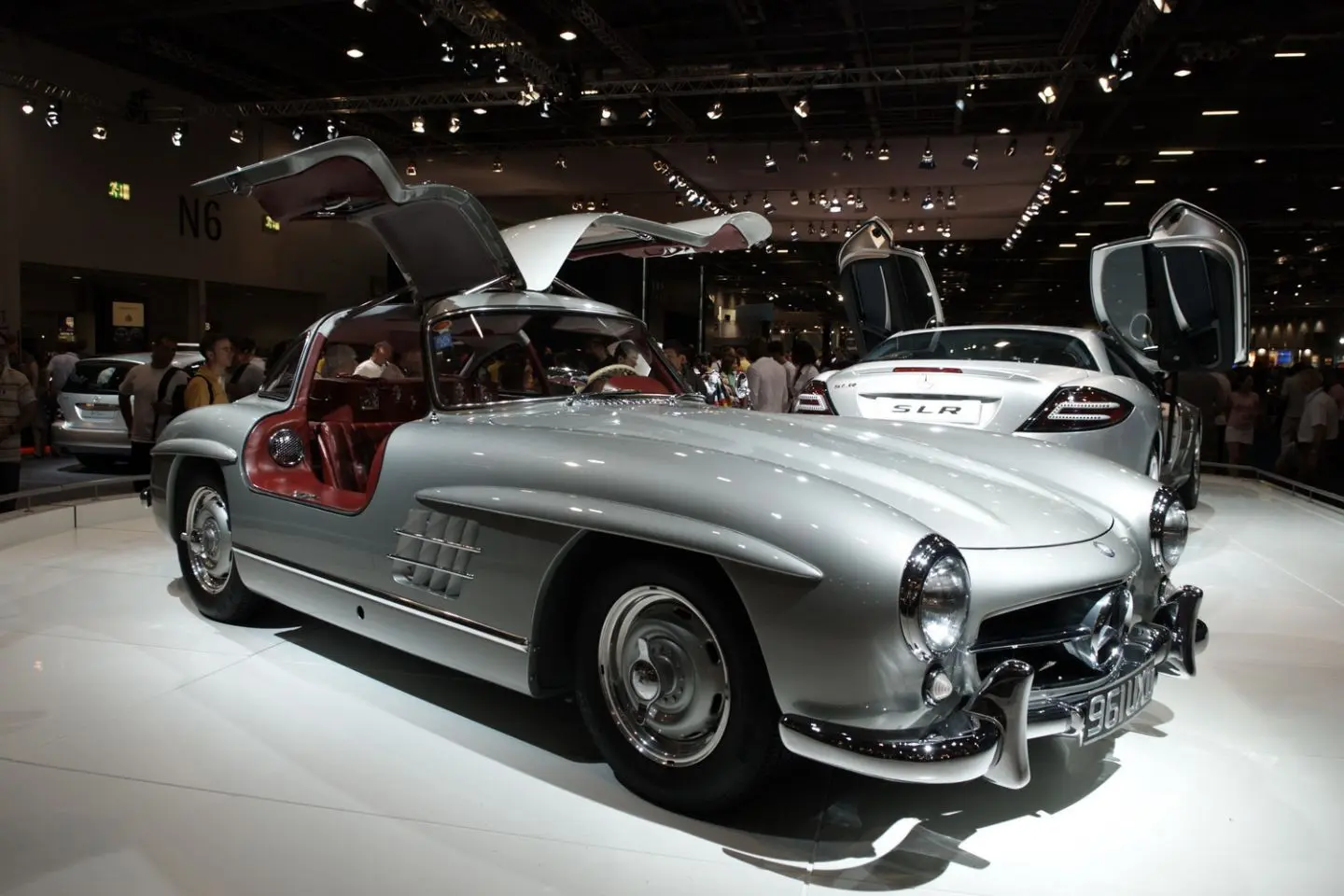
- Model: Mercedes-Benz 300SL
- Year: 1955
- Top speed (mph): 150.7 mph
- Top speed (kmh): 242.5 kmh
The Mercedes-Benz 300SL achieved a new speed record for a production car on May 12 1955, at the wheel was Stirling Moss who reached a maximum speed of 242.5 kmh on the Brescia Verona highway, a highway in Italian toll. This feat not only demonstrated the incredible power of the 300SL, but also marked it as the fastest production car at the time.
For this record, the 300SL was used, was a two-seater model with a hardtop and a 3.0L inline six cylinder engine that produced 215HP. The record was broken when it was made on a round trip along a 7.9 mile (12.7 km) stretch of road with an average speed of 150.7 mph.
The Royal Automobile Club (RAC) of Great Britain verified oficially this speed record, lending credibility to the 300SL’s achievement. But the 300SL’s wasn’t just limited to speed records, because the same year a Mercedes team driving a 300SL won the 24 Hours of Le Mans! demonstrating the vehicle’s versatility and endurance in racing settings.
Aston Martin DB4 GT – 1959
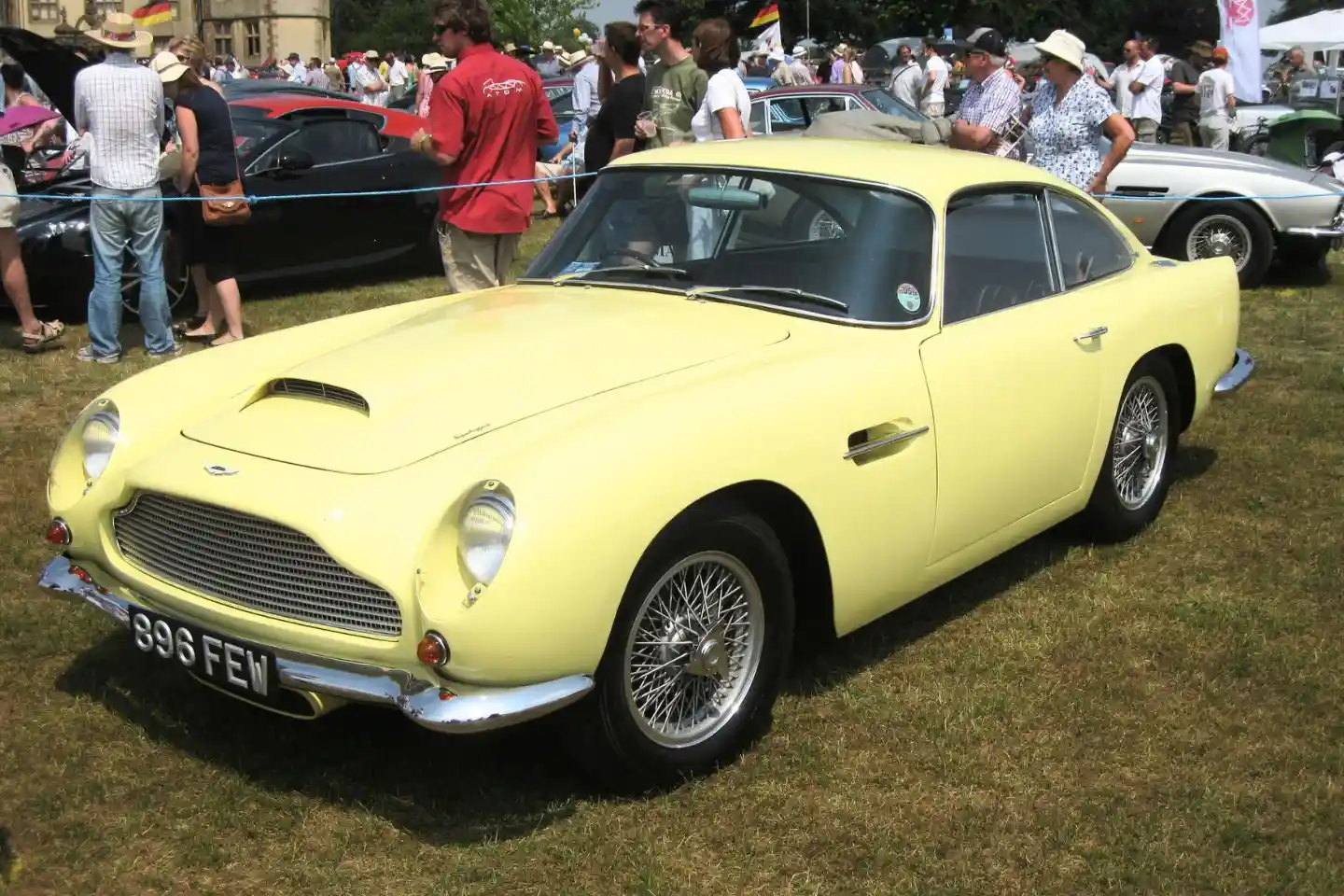
Andrew Bone.- Model: Aston Martin DB4 GT
- Year: 1959
- Top speed (mph): 152 mph
- Top speed (kmh): 244.6 kmh
In December ’61 Autosport magazine tested the Aston Martin DB4 GT, setting a new speed record. The car reached a top speed of 152 mph (244.6 km/h), surpassing the 300SL, which held the record until then.
The test took place at the MIRA test track in Warwickshire, England. It’s important to note that the DB4 GT used was a standard model, meaning it had no special modifications for the test. The driver completed several laps on the track, achieving the record on one of them.
Autosport magazine used electronic timing equipment to verify the DB4 GT speed. Additionally, it is said that a representative from the RAC (Royal Automobile Club) supervised the test to ensure result accuracy, but we haven´t been able to certify this last part.
Iso Grifo GL 365, 1963
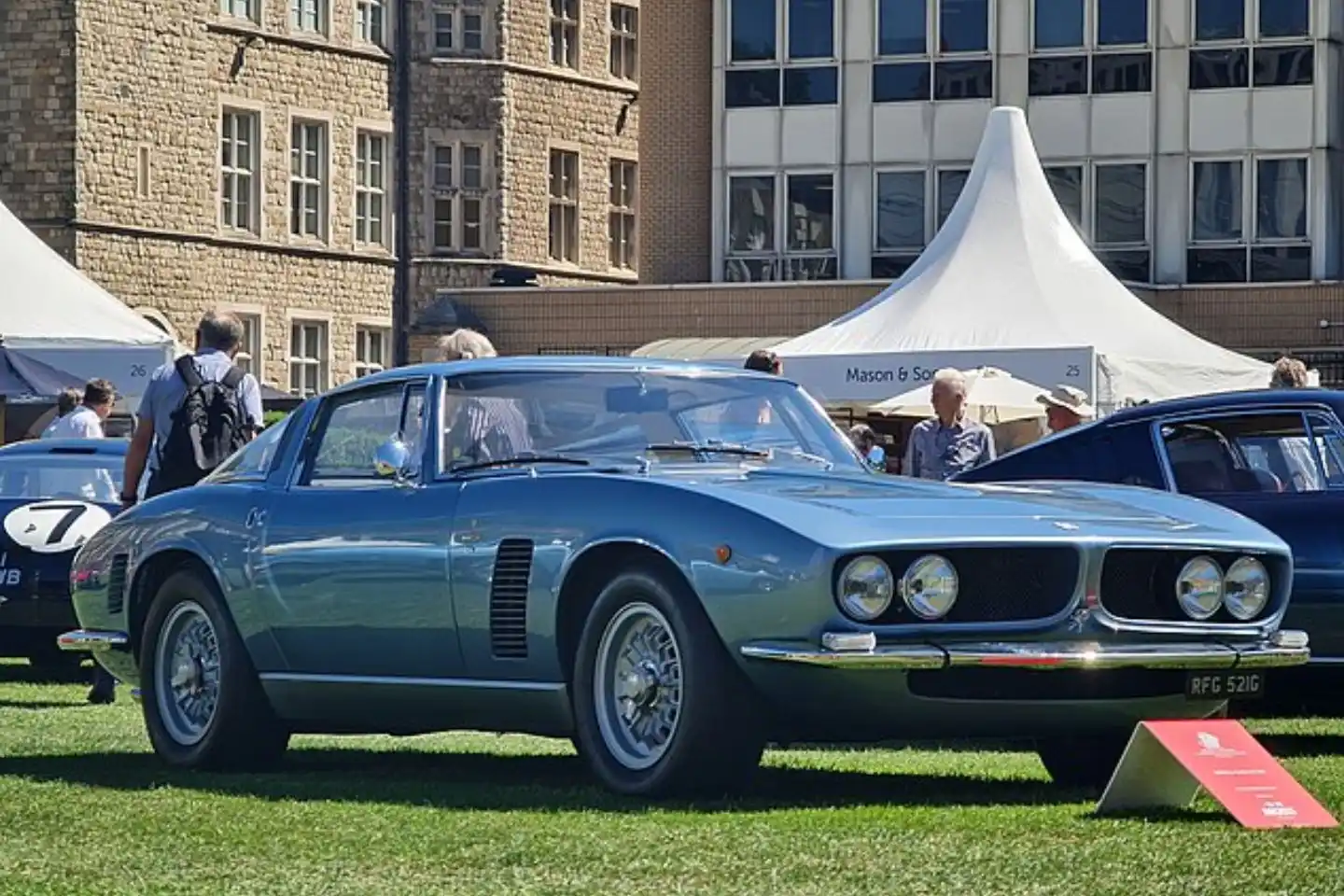
MrWalkr.- Model: Iso Grifo GL 365
- Year: 1963
- Top speed (mph): 161 mph
- Top speed (kmh): 259 kmh
The Iso Grifo GL 365 was equipped with a 5.4-liter Chevrolet V8 engine that produced 365 hp. The car was driven by a professional driver, who managed to reach a top speed of 161 mph (259 kmh).
Autocar magazine conducted a speed test on the Iso Grifo GL 365, a two seater sports car of Italian origin. The test was carried out on the M1 motorway in England, a six lane highway that at the time was relatively new and free of traffic.
Importantly, no international automotive organization has officially recognized the speed record of the Iso Grifo GL 365. However, the test conducted by Autocar magazine was considered a valid and reliable trial by the automotive community at the time.
AC Cobra MK III 427, 1965
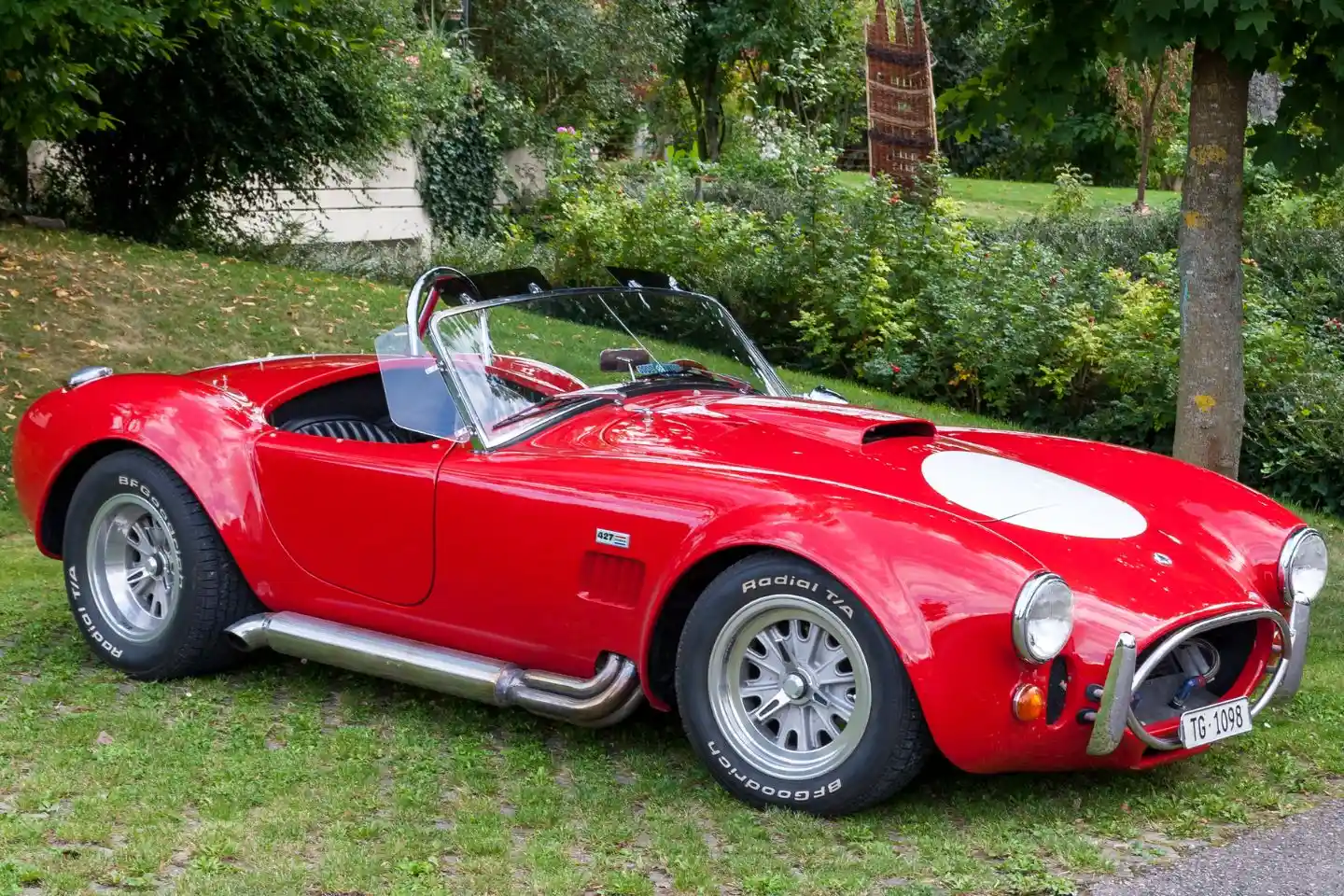
- Model: AC Cobra MK III 427
- Year: 1965
- Top speed (mph): 165 mph
- Top speed (kmh): 266 kmh
In 1965, the AC Cobra Mk III 427 appeared in history’s fastest car lists when Car and Driver magazine conducted a speed test in which the Cobra splayed its credentials at the Lime Rock Park circuit in Connecticut, reaching a top speed of 162 mph (261 kmh). The magazine was impressed by the Cobra’s blistering pace, and the Cobra hit 0–60 mph (97 kmh) in 4.4 seconds, as billed by Shelby.
In addition, other car magazines of the time corroborated this record by conducting subsequent tests, with some reporting a maximum speed of around 165 mph (266 kmh) under ideal conditions. It must be said that these tests, conducted by experienced drivers, confirmed the status of the AC Cobra Mk III 427 as the fastest production car of its time. Of course, top speeds are top speeds and are generally achieved under controlled conditions, so it doesn’t necessarily mean that a regular driver could hit those speeds with these cars on his local road.
Lamborghini Miura P400, 1967
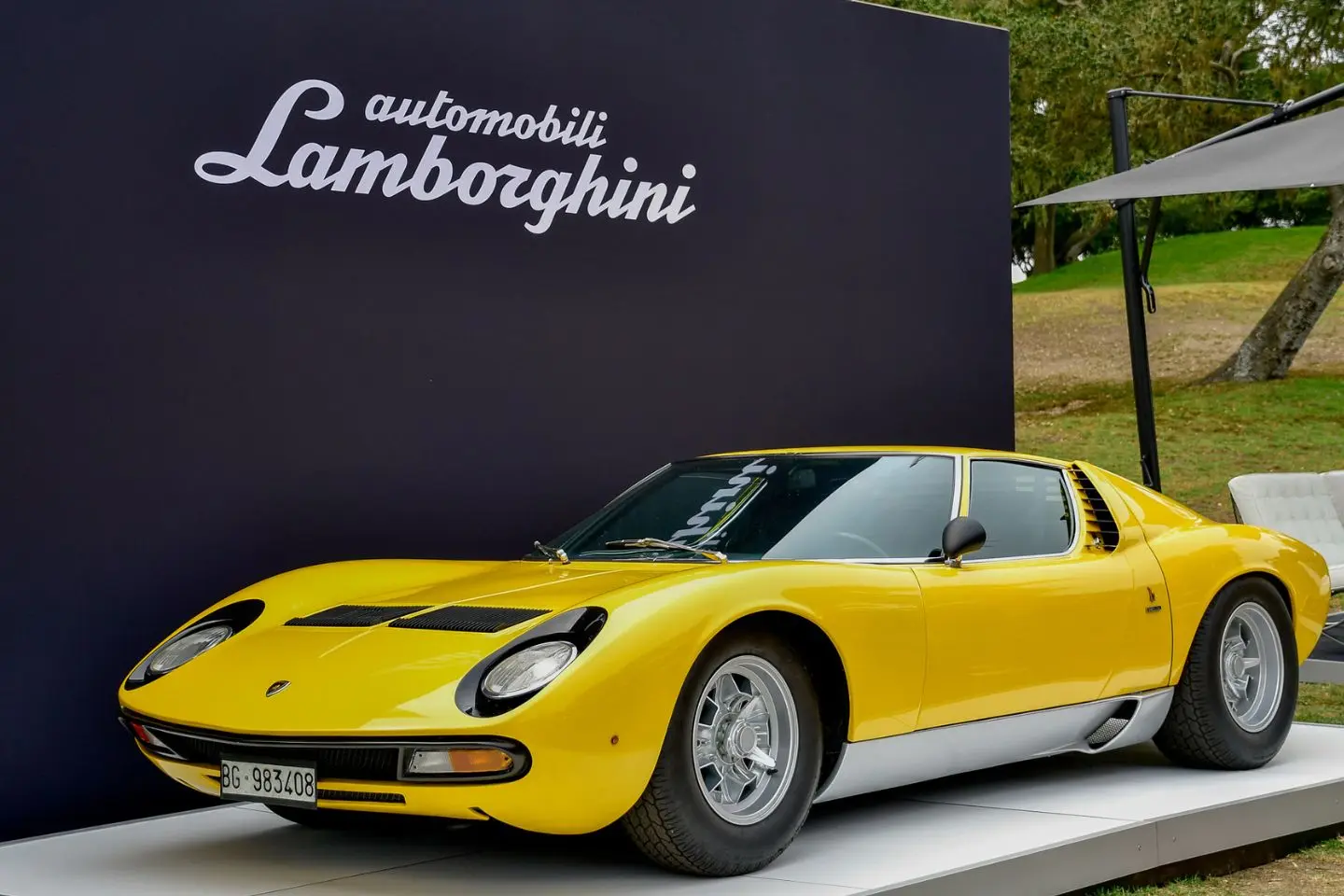
- Model: Lamborghini Miura P400
- Year: 1967
- Top speed (mph): 171 mph
- Top speed (kmh): 275 kmh
Lamborghini Miura P400 set a record with its 3.9-liter V12 engine, delivering 350 hp. The light car, tipping the scale at merely 1,300 kg, could go from 0 to 100 kmh (0 to 62 mph) in a brisk 6.7 seconds.
In June 1967, the Motor magazine put this car to a test. The result? The Lamborghini Miura P400 set a new speed record for fastest cars by reaching 171 mph (275 kmh)!
This record by the Lamborghini Miura P400 wasn’t just an ordinary victory. It showed that the Miura was among the swiftest off-the-shelf cars around. This record win also resulted in heightened interest from car buffs.
Ferrari 365 GTB/4 Daytona, 1968
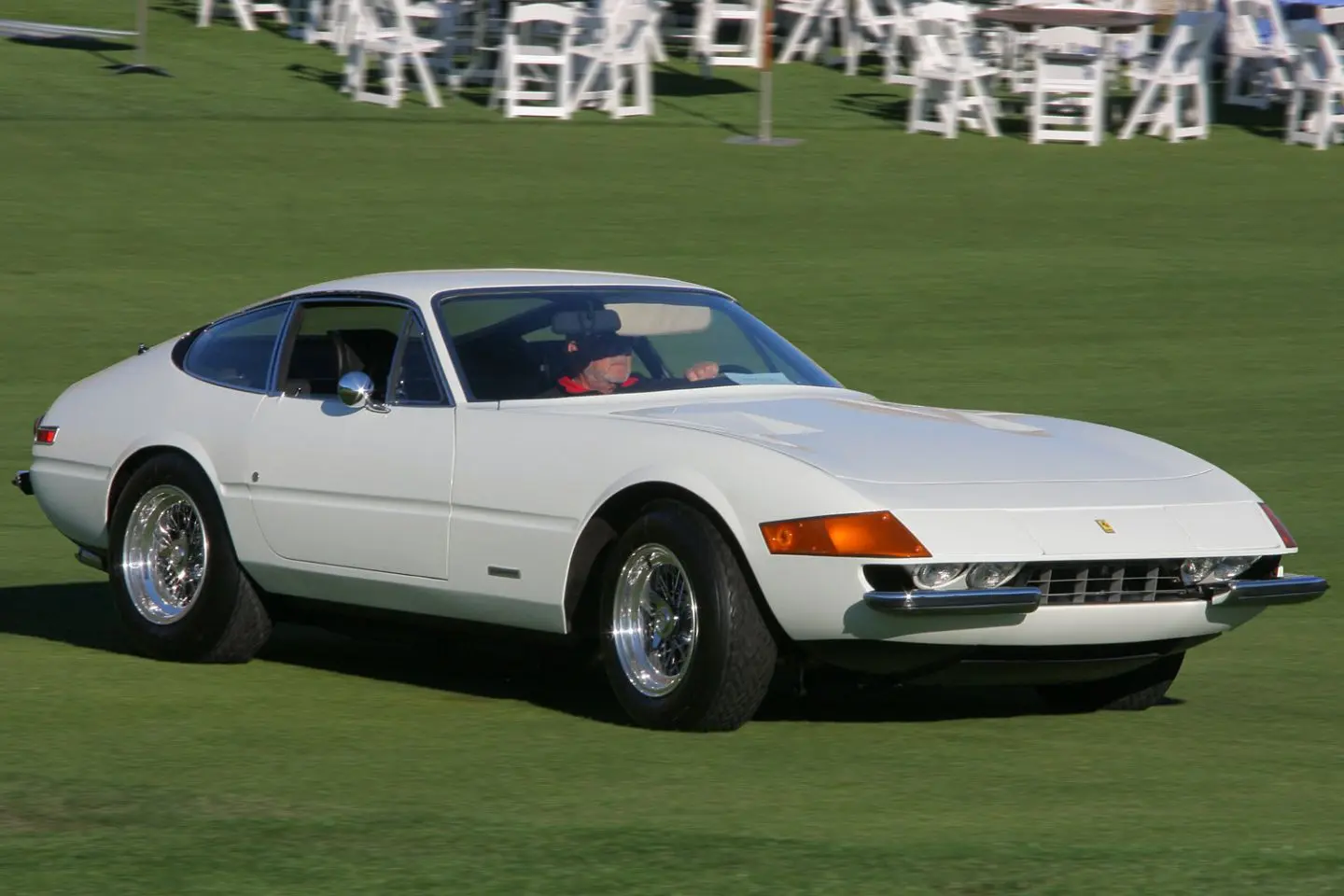
- Model: Ferrari 365 GTB/4 Daytona
- Year: 1968
- Top speed (mph): 174 mph
- Top speed (kmh): 280 kmh
The Ferrari 365 GTB/4 Daytona, back in 1970, reigned supreme among fastest cars. A big 4.4-liter V12 engine boasting 352 HP helped it go past 280 kmh (174 mph).
In the same year, Sport Auto, a German magazine, ran a speed trial. They used the Ehra-Lessien highway in Germany, known for its lengthy straightaways, perfect for top speed trials.
The Ferrari used was a regular model with no tweaks to its engine. It had its bumpers removed. High-speed Pirelli tires were on it too.
Lamborghini Countach LP500S, 1982
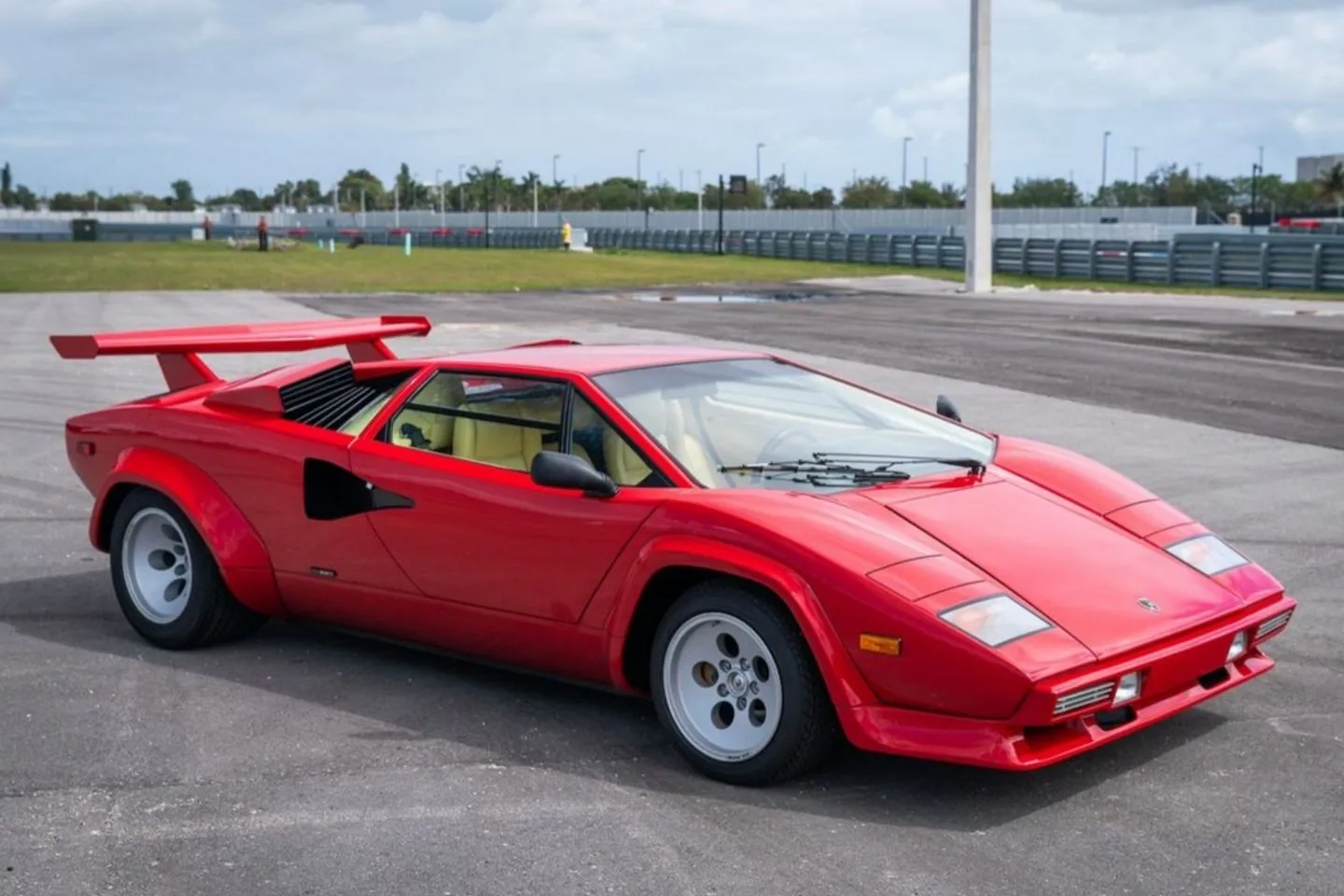
- Model: Lamborghini Countach LP500S
- Year: 1982
- Top speed (mph): 182 mph
- Top speed (kmh): 293 kmh
The Lamborghini Countach LP500S had a 4.8-liter V12 engine that pushed out 455 hp. This beast could sprint from 0 to 100 kmh (0 to 62 mph) in just 4.9 seconds, peaking at a speed of 293 kmh (182 mph).
Back in 1982, the Countach LP500S was put to the test at the Nardo circuit in Italy by Auto, Motor und Sport, a German magazine. The car amazed everyone as it hit 293 kmh (182 mph), making it the fastest production car around then.
This test was performed under perfect conditions with a 20°C (68°F) environment on a dry track. Furthermore, the Countach LP500S was just a regular model with zero extra modificatons made for the test.
Ruf BTR, 1983

- Model: Ruf BTR
- Year: 1983
- Top speed (mph): 190 mph
- Top speed (kmh): 305 kmh
In 1983, the Ruf BTR took the car world by storm. On Italy Nardo highway, this car shattered a world speed record, reaching 190 mph (305 kmh). A known German magazine, Auto Motor und Sport, confirmed this feat.
This record showcased Ruf Automobile’s capabilities. They created cars faster than the Porsche! models from which they stemmed.
Despite this, the Ruf BTR record sparked debate. Some called it not a real production model due to its limited number of units. Even so, Auto Motor und Sport stamped their approval on the record. Without a doubt, the BTR was the globe’s fastest production car.
Porsche 959, 1986
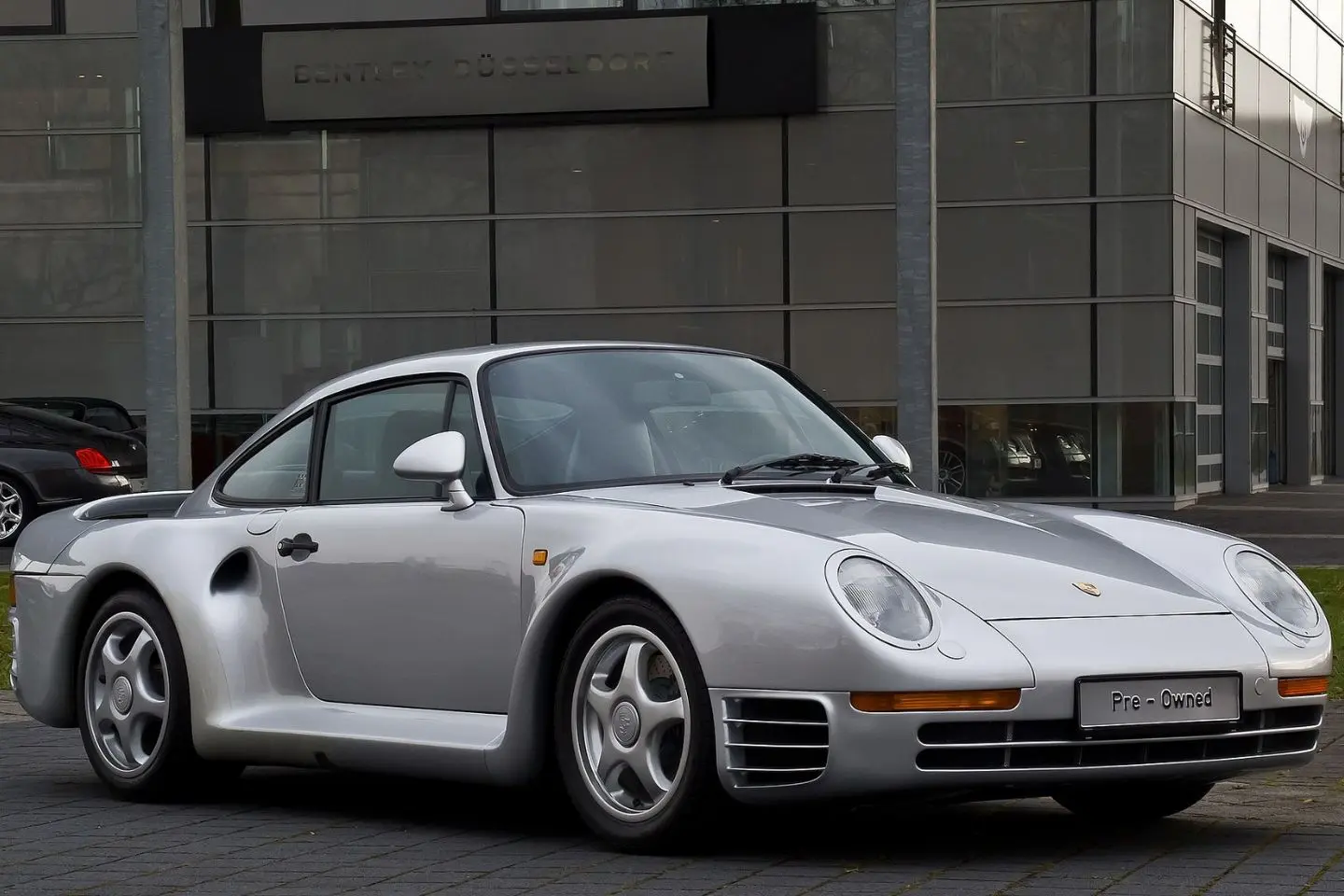
- Model: Porsche 959
- Year: 1986
- Top speed (mph): 198 mph
- Top speed (kmh): 319 kmh
In mid-1986, a Porsche 959, managed by a company’s tester, hit 198 mph (319 km/h) on a private road. This marked the highest speed ever for a ready-made car.
This speed test was done on a private track. The secure setting let the trial be safe and exact. The 959 not just broke past records but went far beyond. This made it the quickest ready-made car globally.
Moreover, Road & Track, a magazine, also ran its tests on the 959. This backed up the company’s facts. Their results showed that the 959 was indeed the quickest ready-made car worldwide then.
Ferrari F40 (1987)
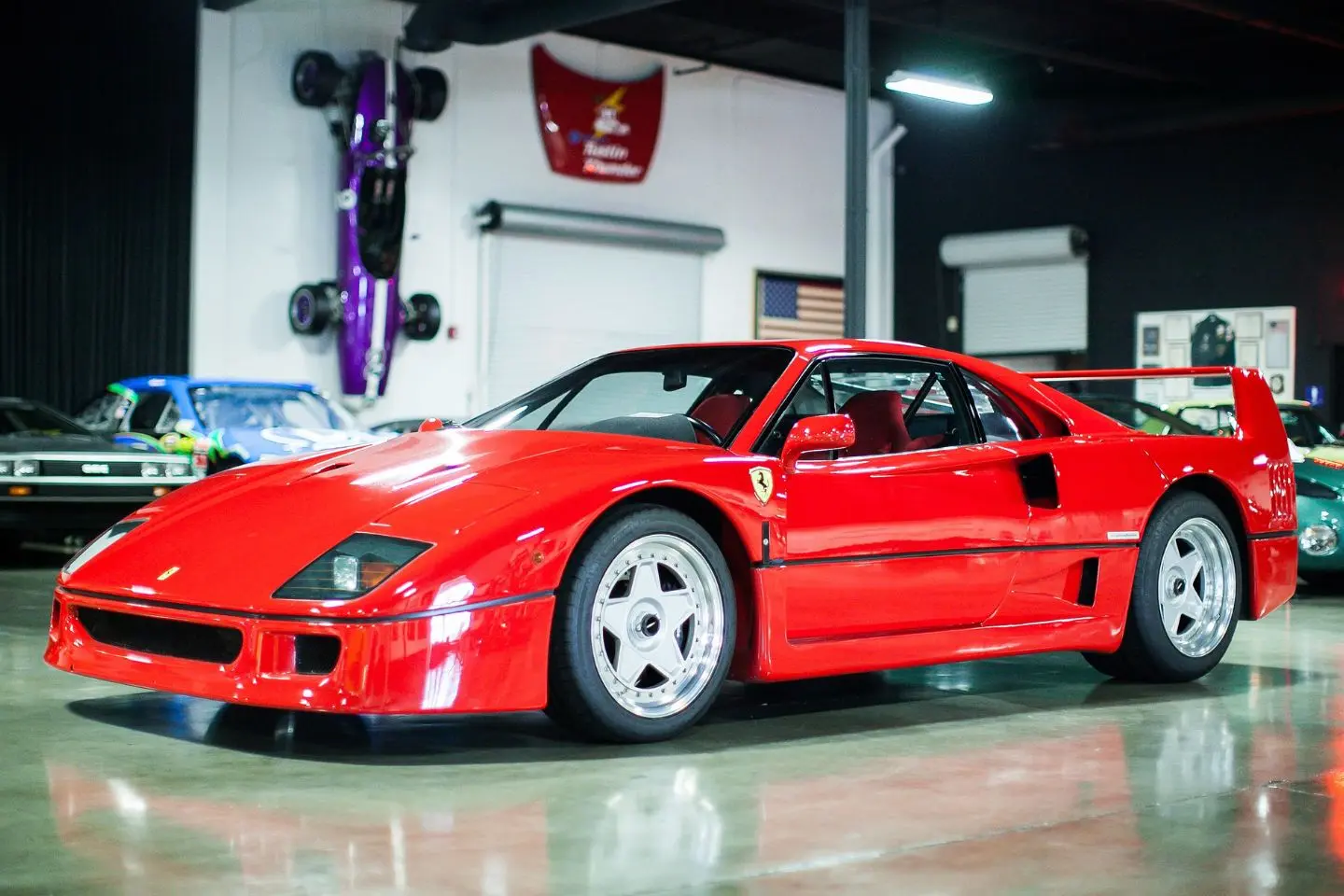
- Model: Ferrari F40
- Year: 1987
- Top speed (mph): 201 mph
- Top speed (kmh): 324 kmh
Back in 1987, a pilot who tests Ferraris drove an F40 super fast. The car hit a top speed of 324 km/h (201 mph), setting a record on a test track in Italy named Nardo. The track is oval shaped, perfect for speeding. To balance the speed, the car took 10 laps forward and the same amount back. The impressive part? This run marked the first time a production car broke through the 200 mph speed limit.
The record speed of the F40, 324 km/h (201 mph), was confirmed by the International Automobile Federation (FIA). The FIA is an important group for motor sports. They make and check the rules for car competitions. Their verification meant the F40 held a speed record.
The F40’s high-speed record stirs up debate. Some people believe it hit 326 km/h (202.7 mph). This idea comes from an unofficial speedometer check.
Ruf CTR, 1987
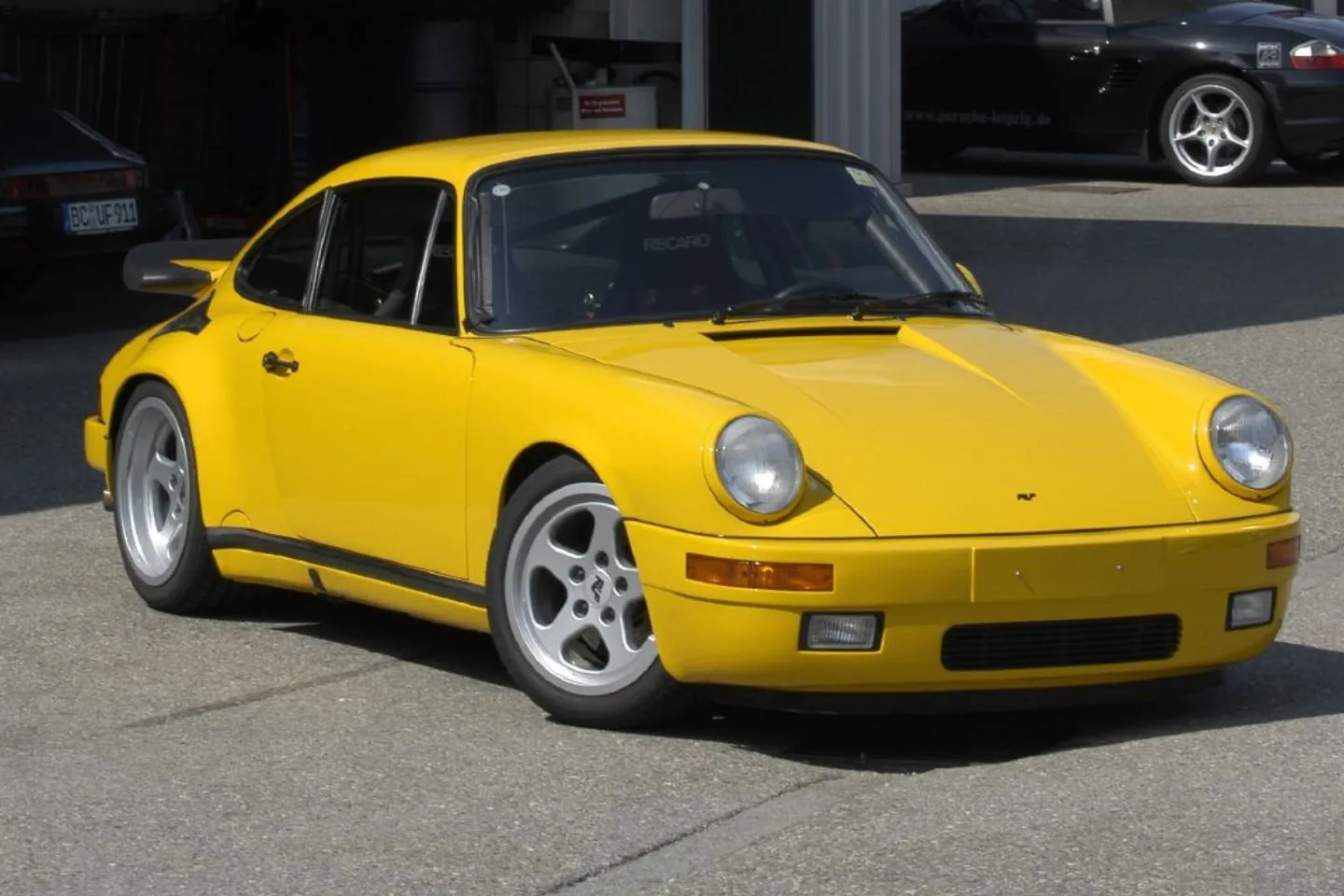
- Model: Ruf CTR
- Year: 1987
- Top speed (mph): 213 mph
- Top speed (kmh): 342.8 kmh
The Ruf CTR Yellowbird broke speed records hitting 342 kmh (213 mph) on Germany’s Ehra-Lessien track. It beat the F40’s record, which had been 324 kmh (201 mph).
This feat was checked in 1988. Auto, Motor und Sport, a German magazine, conducted a test on the ring circuit of Nardò. The Yellowbird soared to 346 kmh (215 mph), backing up its earlier record on the Ehra-Lessien track.
However, not everyone believes the Yellowbird’s record is valid. Some question its authenticity as it didn’t get an FIA confirmation. Others point out that there were only 29 Yellowbird units. They feel it doesn’t qualify as a true production car due to this.
McLaren F1: 1998
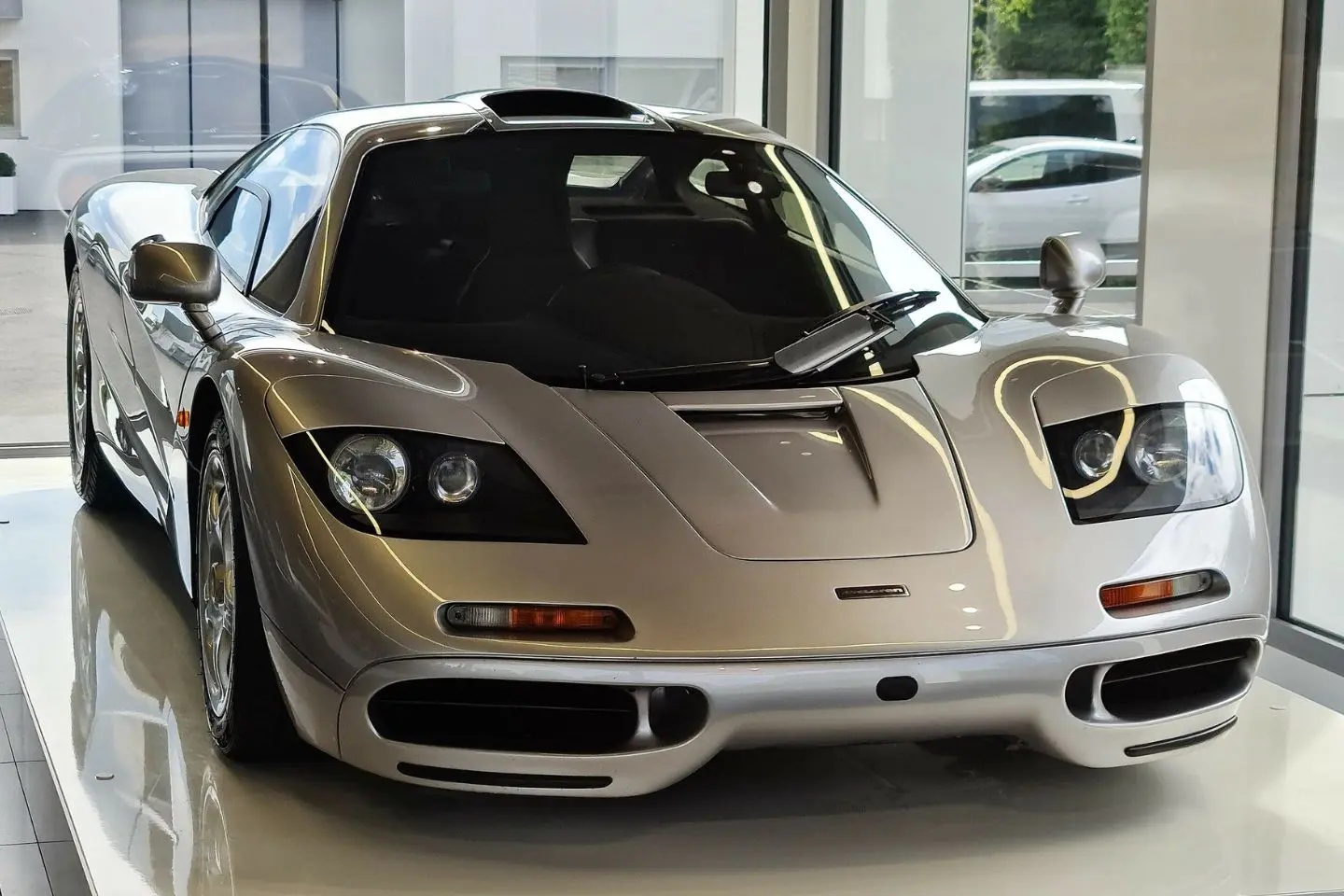
- Model: McLaren F1
- Year: 1998
- Top speed (mph): 240.1 mph
- Top speed (kmh): 386.4 kmh
In 1993, test driver Ray Bellm reached 231 mph (372 km/h) on the Nardo track in Italy. However, the unidirectional measurement did not meet international standards.
In 1998, professional driver Andy Wallace set the official record at Volkswagen’s Ehra-Lessien track: 240.1 mph (386.4 km/h) on an average of two bidirectional passes.
In the same session, with the rev limiter deactivated, Wallace reached 243 mph (391 km/h). Although impressive, this record is not considered official as it does not comply with the norms.
As a curiosity, the F1 remains the world’s fastest naturally aspirated production car.
Bugatti Veyron EB 16.4 – 2005
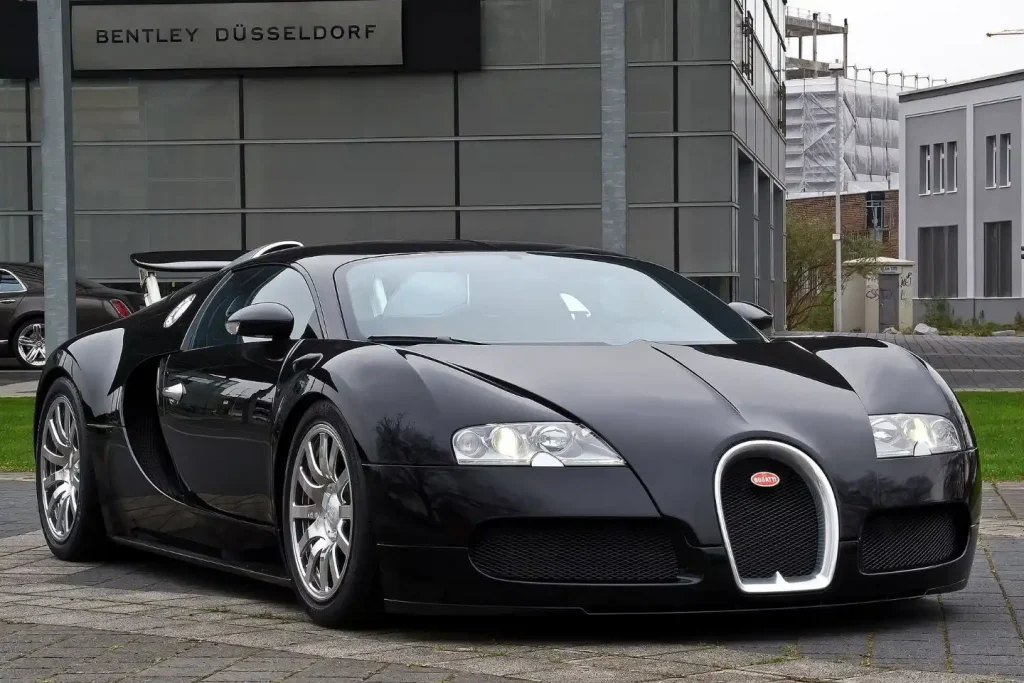
- Model: Bugatti Veyron EB 16.4
- Year: 2005
- Top speed (mph): 253.8 mph
- Top speed (kmh): 408.4 kmh
On April 26 2005, the Bugatti Veyron EB 16.4 set a new record. This record was for the fastest production car at Volkswagen’s German test track in Ehra-Lessien. Pierre-Henri Raphanel was the driver. He boosted the Veyron to a whopping 408.4 km/h (253.81 mph). This beat the McLaren F1’s earlier record of 386.4 km/h (240.1 mph).
The FIA checked Veyron’s record speed. They used an accurate timing system and fast cameras. They put sensors on the track. These sensors tracked the car’s speed along different sections.
The Bugatti Veyron EB 16.4 made a name in car history. It was the first standard production car to break the 400 kmh barrier! this was a new, unique feat in the car business and was seen as a memorable landmark.
SSC Ultimate Aero – 2007
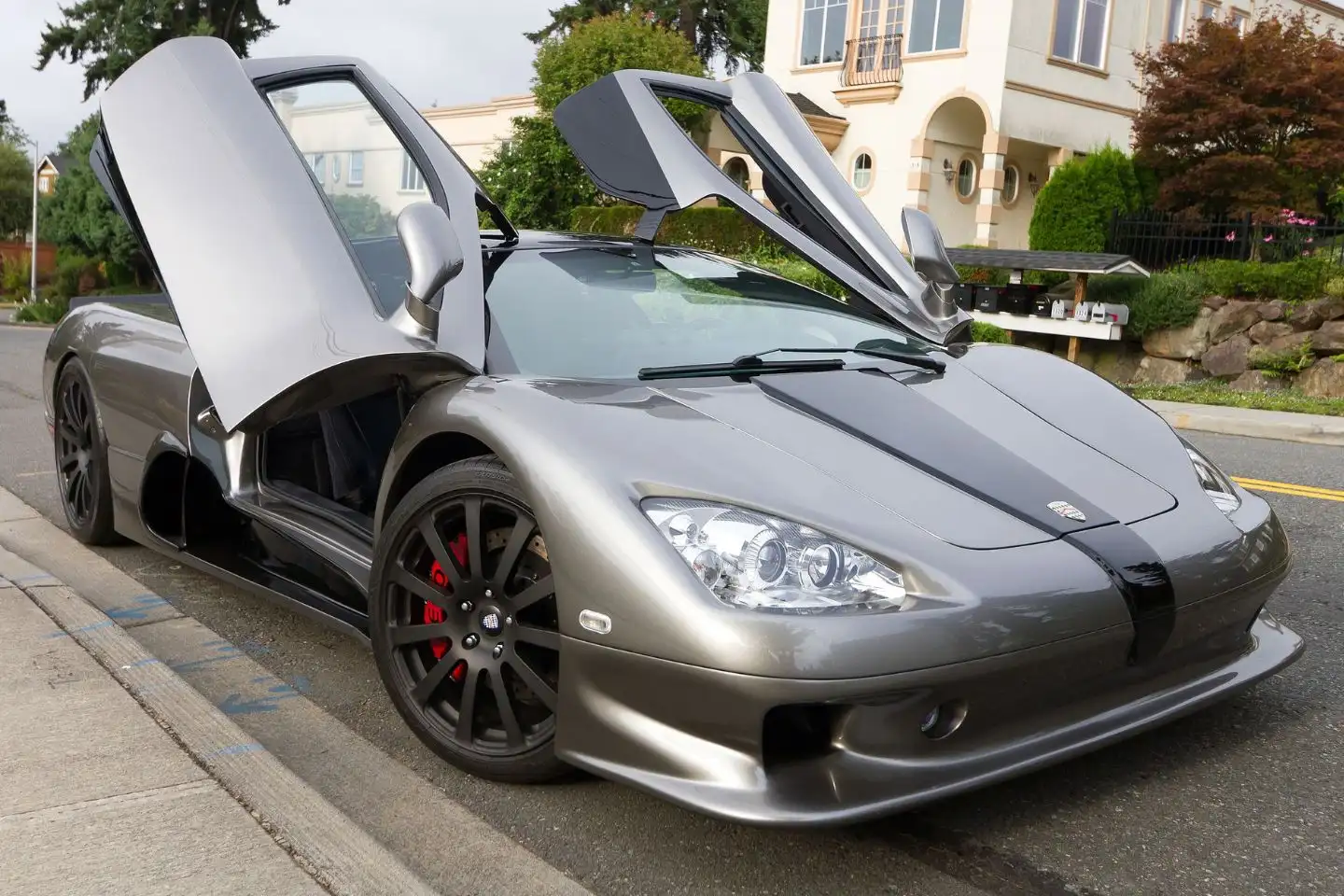
- Model: SSC Ultimate Aero
- Year: 2007
- Top speed (mph): 256.1 mph
- Top speed (kmh): 412.2 kmh
In 2007, the SSC Ultimate Aero, manufactured by Shelby SuperCars (SSC) in the United States, dethroned the Bugatti Veyron 16.4, claiming the title of the world’s fastest production car. On September 13 of that year, the Aero set a new top speed record of 412.2 km/h (256.1 mph) in the state of Washington, United States.
The tests were conducted under the supervision of Guinness World Records and the American Automobile Association (AAA). Two independent radars were used to measure the vehicle’s speed in both directions. Test driver Chuck Bigelow drove the SSC Ultimate Aero to a top speed of 257.14 mph (413.83 km/h) in one direction and 255.86 mph (412.16 km/h) in the other. The official record speed was established as the average of the two runs, 256.1 mph (412.2 km/h).
Bugatti Veyron 16.4 Super Sport – 2010
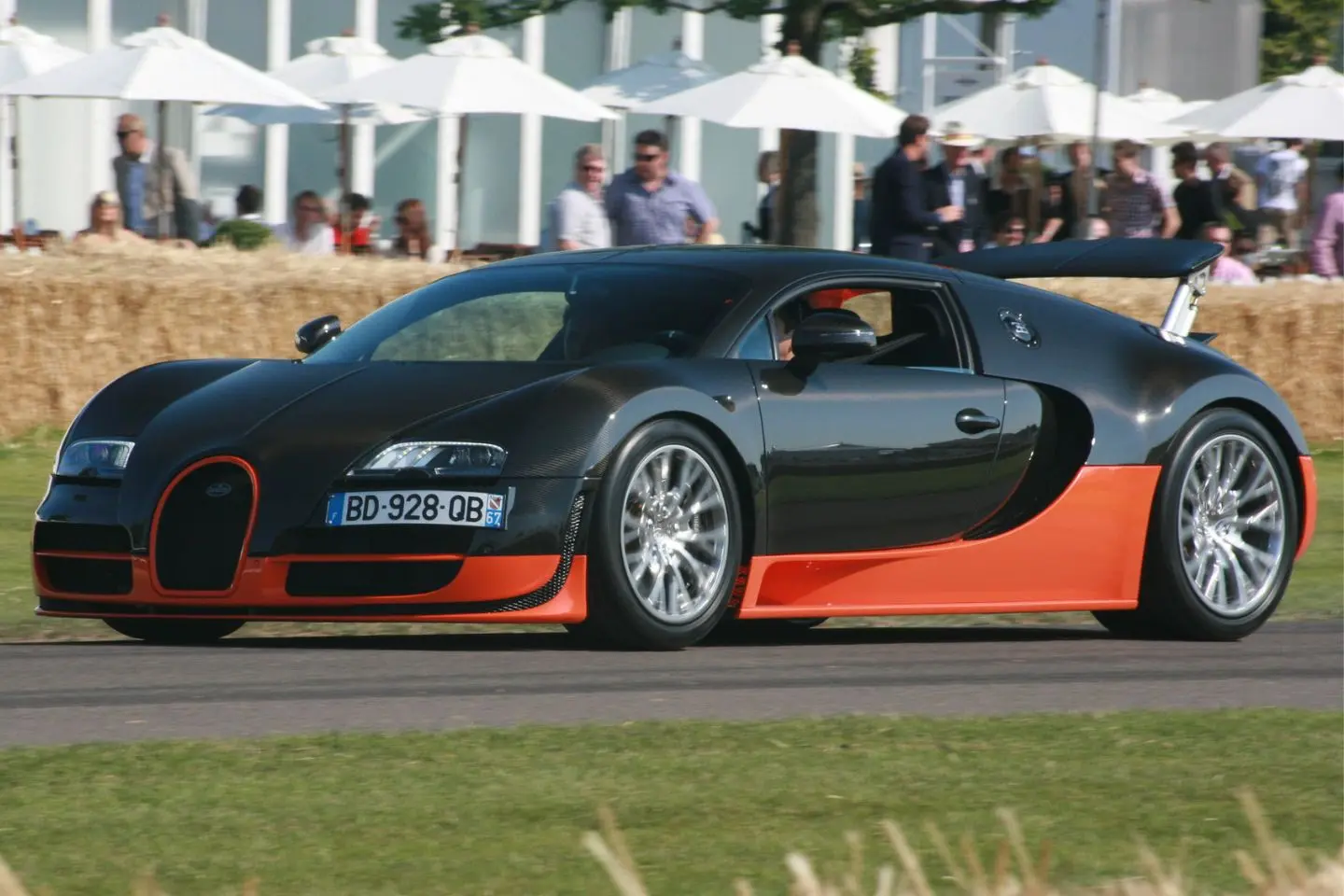
- Model: Bugatti Veyron 16.4 Super Sport
- Year: 2010
- Top speed (mph): 267.9 mph
- Top speed (kmh): 431 kmh
The Bugatti Veyron 16.4 Super Sport returned with this new version to break the speed record for a production car in July 2010 at the Ehra-Lessien test track in Germany. Test driver Pierre Henri Raphanel drove the vehicle to a top speed of 431 km/h (267.9 mph)! breaking the previous record the SSC Ultimate Aero set in 2007.
To achieve this record, Bugatti made a series of modifications to the standard Veyron. The engine power was increased to 1,200 HP, and the vehicle’s aerodynamics were optimized. Special Michelin tires were installed that could withstand the high speeds.
The record of the Veyron 16.4 Super Sport was verified by Guinness World Records. The organization oversaw the speed test and certified that it had been conducted according to its standards and requirements.
Koenigsegg Agera RS – 2017
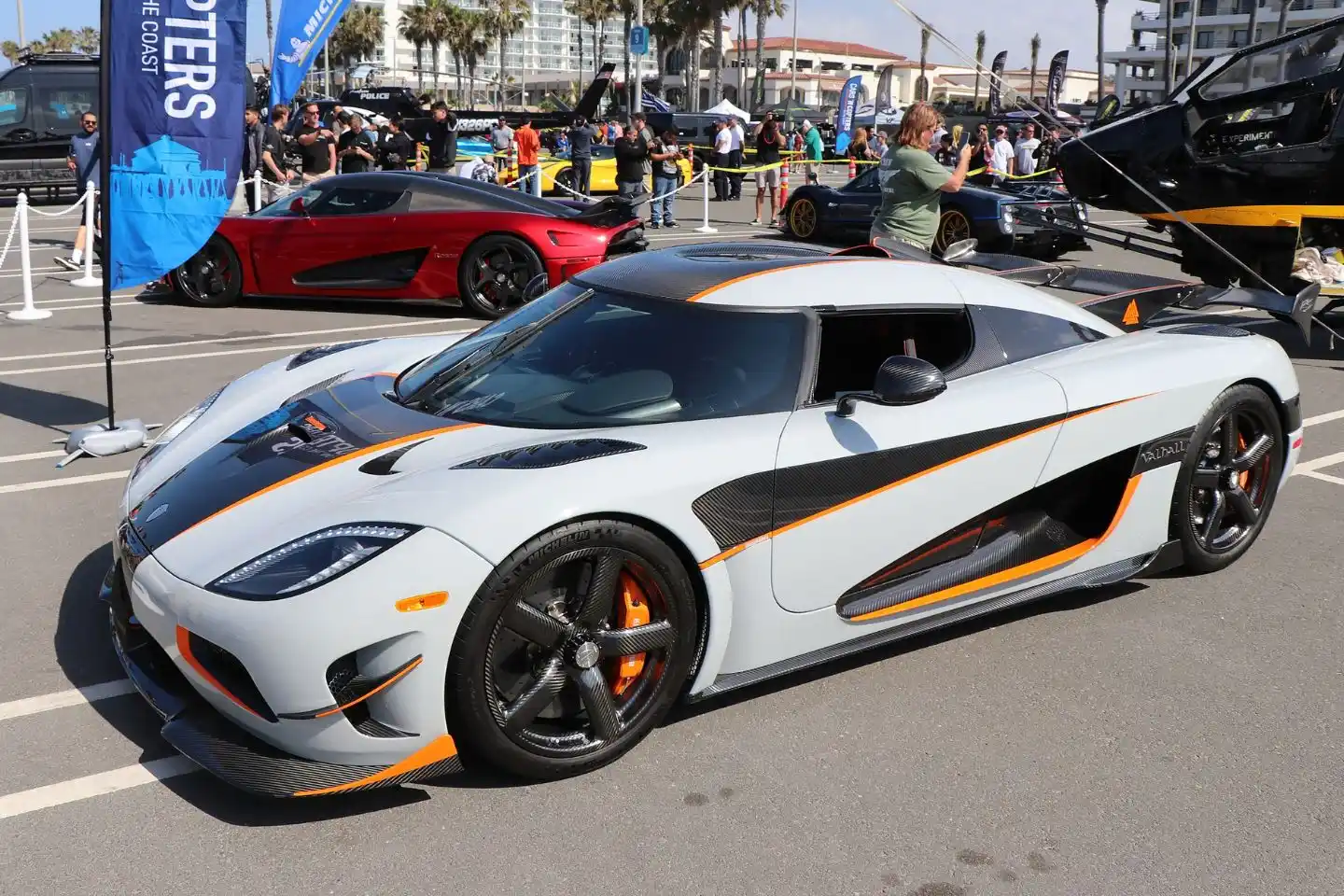
- Model: Koenigsegg Agera RS
- Year: 2017
- Top speed (mph): 277.9 mph
- Top speed (kmh): 447.2 kmh
Niklas Lilja drove the Koenigsegg Agera RS fast one day. This supercar broke two world speed records! It hit a top speed of 447.2 km/h (277.9 mph). That’s the fastest a production car has ever gone. Plus, it clocked the highest speed going the other direction. He raced on a shut-off part of Route 160 in Nevada, making two trips in different directions to average the speed.
The Agera RS that broke these records wasn’t a super-special version, no major tweaks to the engine or its shape. But, it had special tires. They’re Michelin Pilot Sport Cup 2 tires. They’re safe at speed up to 480 km/h (298 mph). Amazing!
The FIA and Guinness World Records validated the record using high-tech tools. Their thorough approach ensured precise data, reflecting their ongoing commitment to upholding exacting standards.
Controversial Speed Claims and Validation Issues
Jaguar XJ220 – 1992
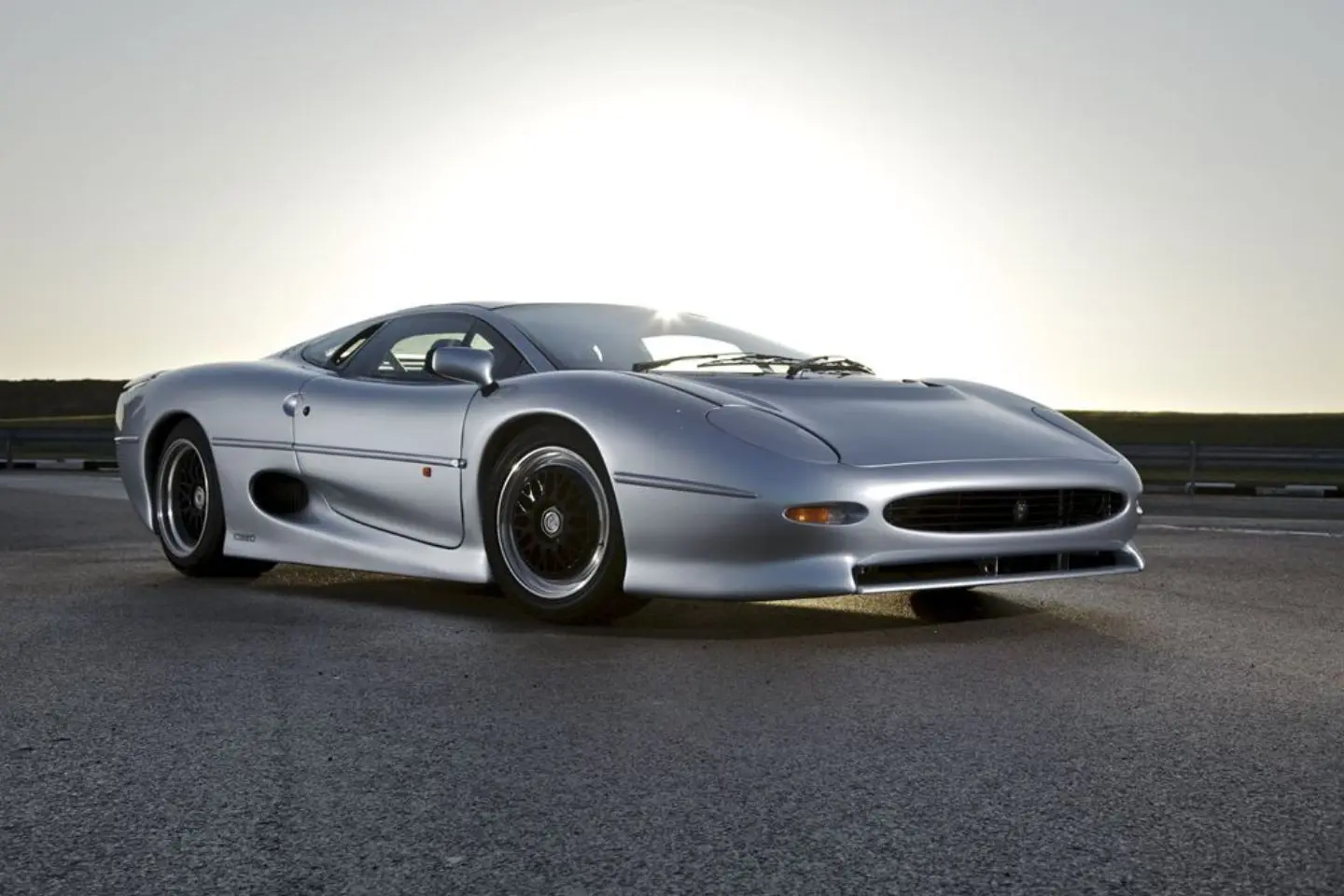
Back on July 21 1992, the Jaguar XJ220 set an incredible pace. It hit 217.1 mph or 349.4 km/h, at Italy’s Nardo test track. This feat made it the world’s fastest production car then. Yet, there were all sorts of doubts about this record from the beginning.
People had issues with changes made to the car. The record-breaking XJ220 had a more oversized rear spoiler, a stronger diffuser, and Pirelli tires made just for this occasion. These features weren’t in the regular model.
Also, the car only set the record on one lap. Not the usual two laps in different directions that FIA mandates for a speed record. Plus, no neutral observers saw the test run. All that made people skeptical of its truth.
Koenigsegg CCR -2005
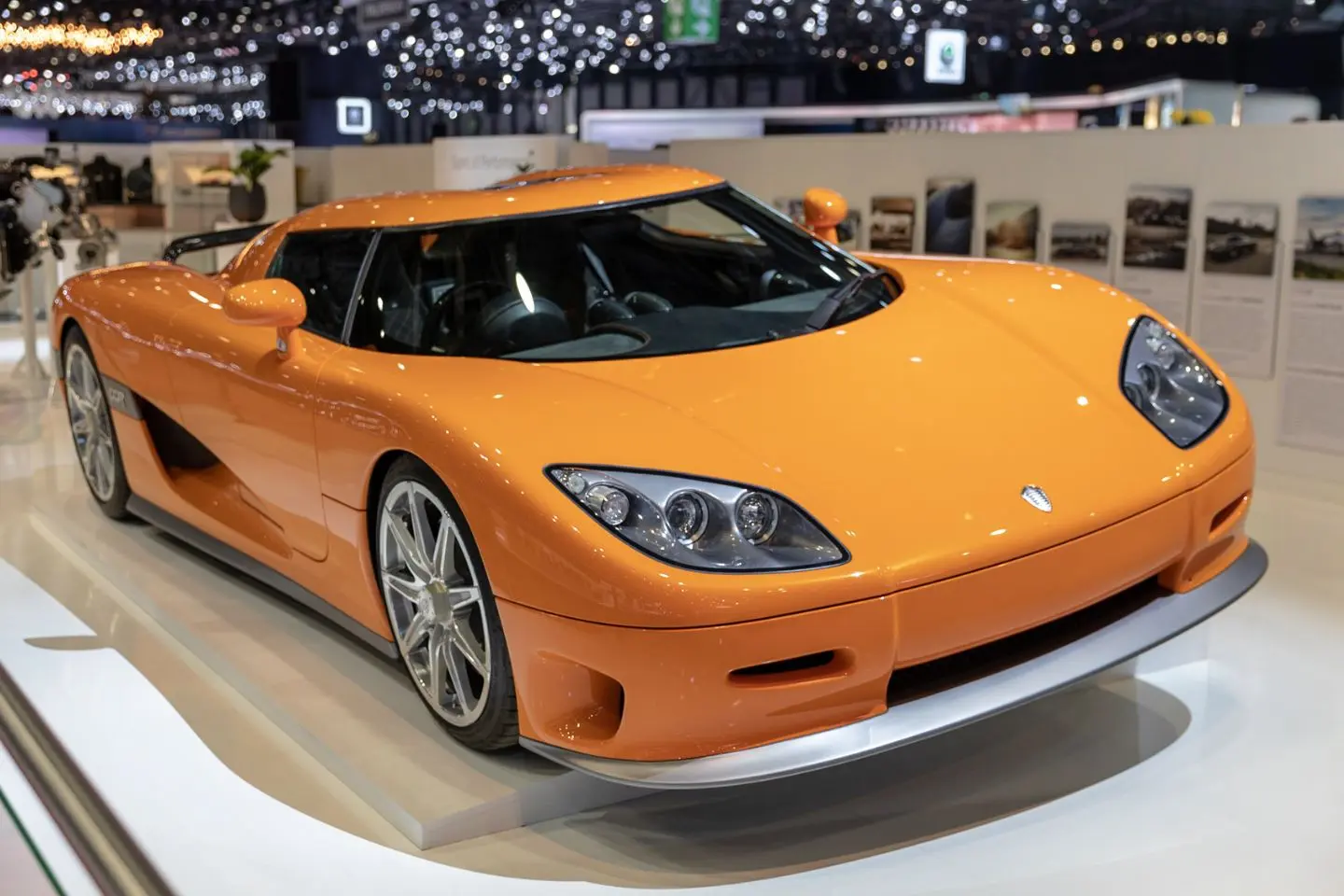
In 2004 the Koenigsegg CCR hit 241 mph (387.9 km/h). This happened on a track in Italy. But the FIA said it wasn’t a new record. This was because the car only went one way.
To get a speed record, the FIA says you need to go both ways. This makes sure wind doesn’t help the car go faster. The Koenigsegg CCR only went one way, and it had wind helping it. This made people question whether it really was a record.
Koenigsegg said the wind was the same both ways. They thought going one way was okay. But the FIA said no. They didn’t accept it as a new record.
Hennessey Venom GT – 2014
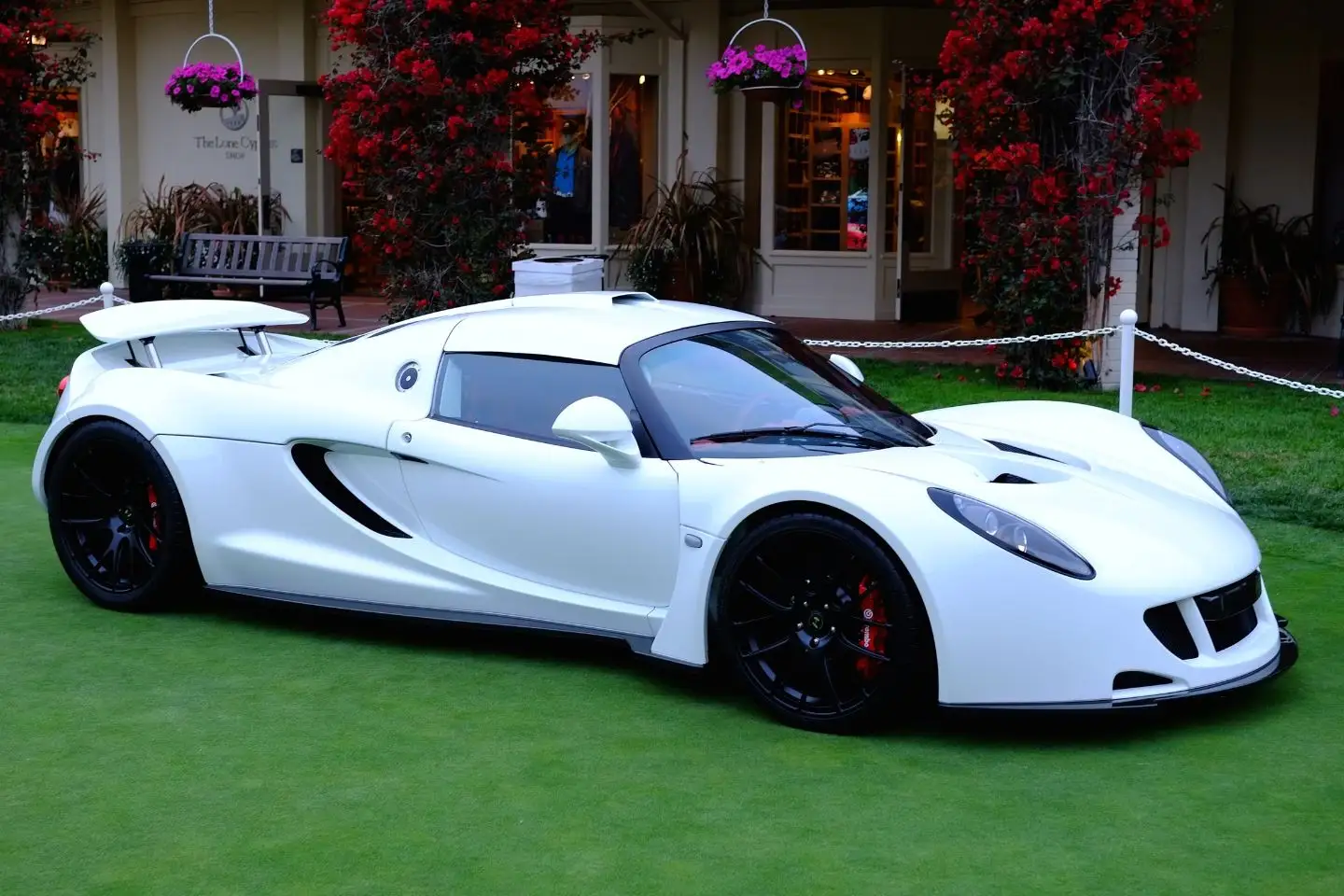
The Hennessey Venom GT was declared the fastest production vehicle in the world in 2004. It achieved a speed of 270.5 mph (435.3 kmh) on a Florida runway. This was at the Kennedy Space Center. But this achievement brought controversy.
A major point of critique was the testing method. The test ran in just one direction. For speed records, the FIA necessitates two runs. These must be in opposite ways. It’s designed this way to balance out the benefits of tailwinds.
There’s a debate about the car used. The Venom didn’t have a Hennessey Vehicle Identification Number (VIN), so it might not be a typical production vehicle.
Also, it’s key to remember that the FIA or a different unbiased group didn’t certify the test. This can lower the outcome’s trustworthiness. Certain experts question the speed-measuring method too, saying it wasn’t precise.
Bugatti Chiron Super Sport 300+ – 2019
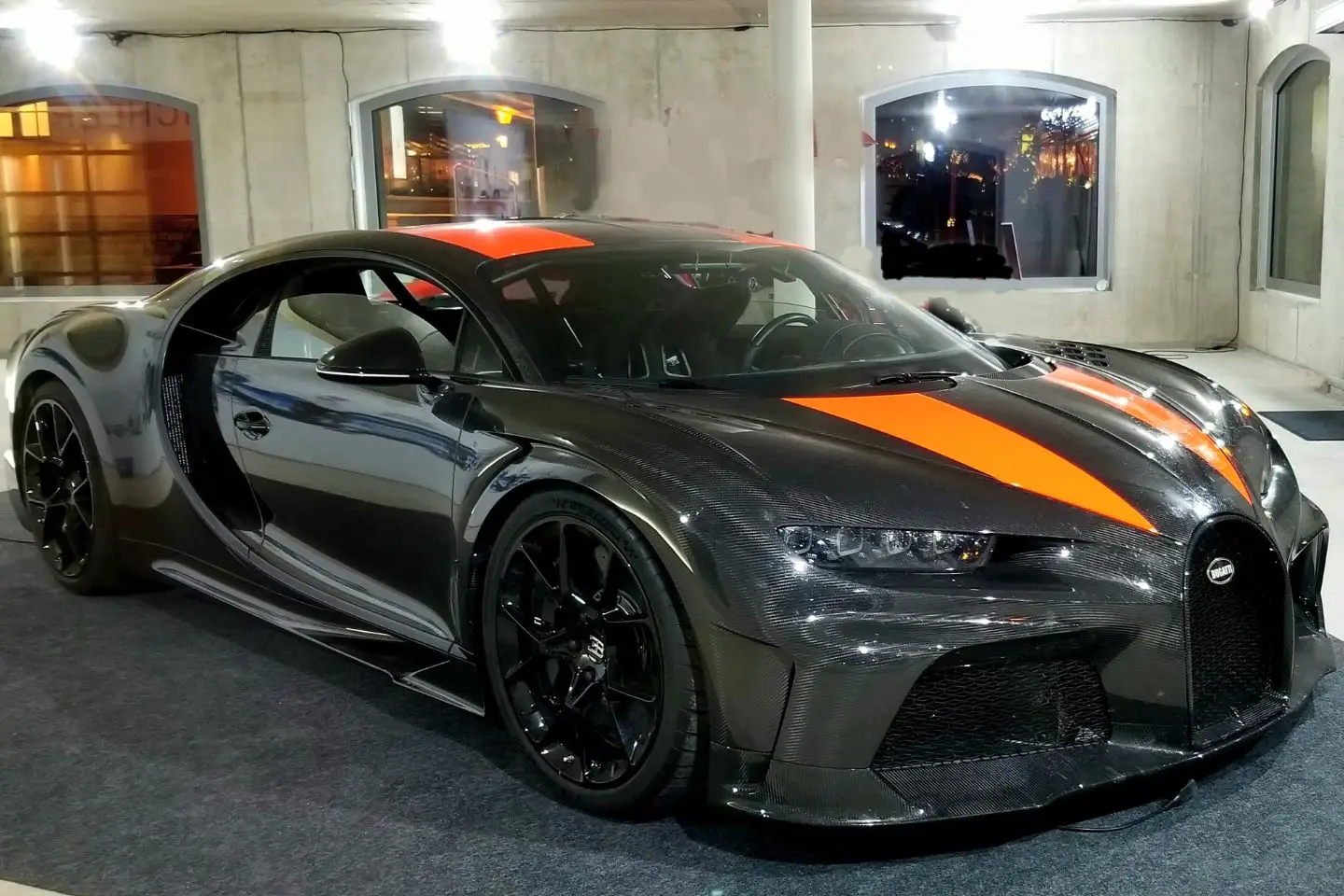
The Bugatti Chiron Super Sport 300+ clinched the title of the world’s fastest production car in 2019. It shattered records by zipping along at 304.8 mph (490.5 km/h) on the Ehra-Lessien test track in Germany, but controversy still swirls around this achievement.
Just as with the Koenigsegg CCR and the Hennessey Venom GT, there’s a wrinkle. The Chiron Super Sport 300 + only made a single pass to set the record. This isn’t recognized by the FIA when it comes to speed records homologation. And this causes debate.
The FIA or another independent body didn’t check the test, making the results less believable. The speed measuring method drew criticism from some experts. They argued it wasn’t right, and that Ehra-Lessien track isn’t as good as Nardo for such tests.
Bugatti has handed the record to the FIA for approval to clear up the controversy. But, the process isn’t finished yet.
SSC Tuatara – 2022
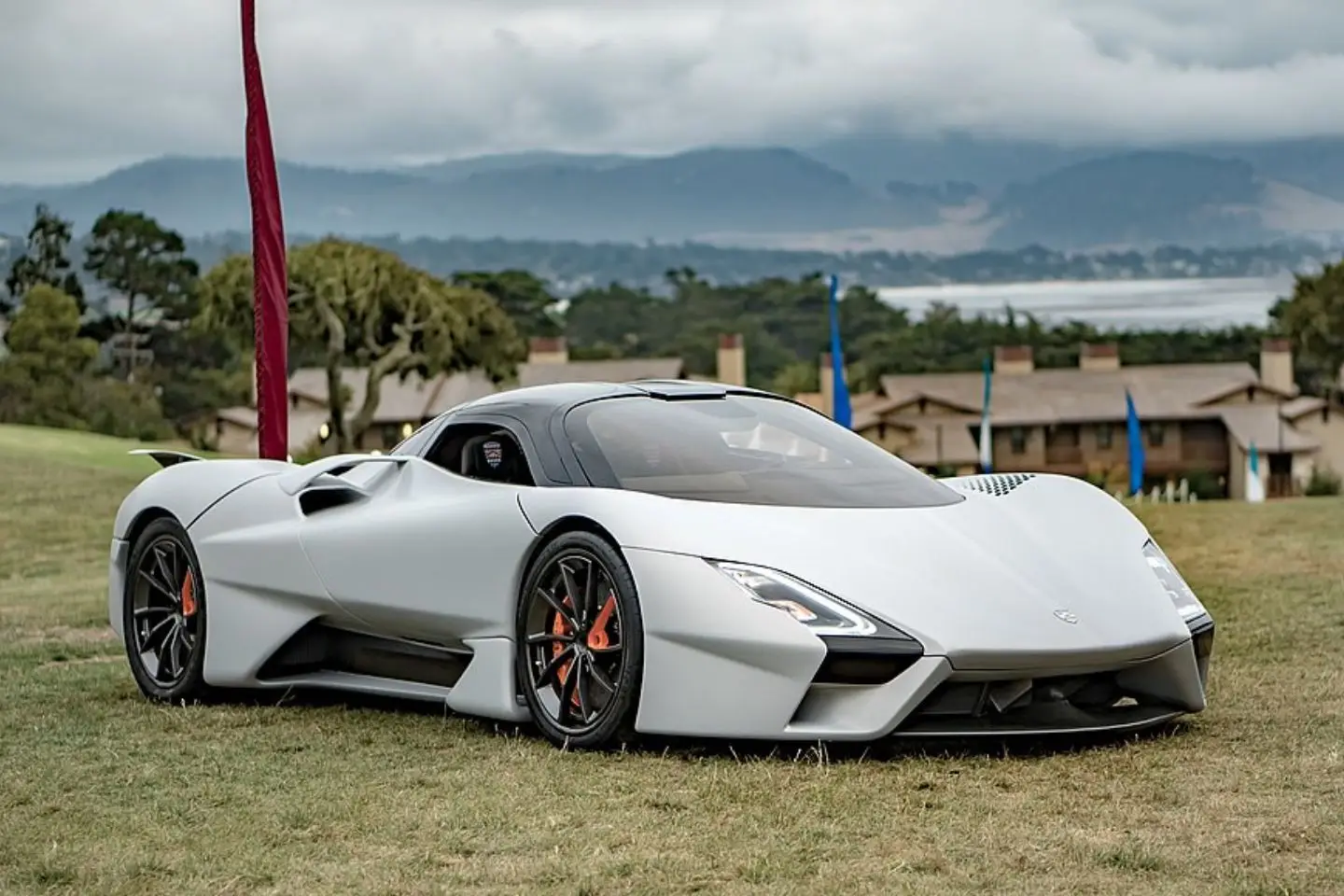
SSCNA.The SSC Tuatara has hit bumps in the road with its “World’s Fastest Car” claim.
The Tuatara blazed past at 316 mph in Nevada in Oct 2020. Still, the land speed record keepers wiped the record. They said the GPS data failed a fact check.
In January 2021, SSC conducted new tests at the Kennedy Space Center track, aiming to achieve a controversy-free speed record. Speeds of 282.9 mph (455.3 km/h) in one direction and 295.3 mph (475.3 km/h) in the opposite direction were recorded, yielding an average of 289.1 mph (465.7 km/h).
Come Jan 2021, SSC raced to prove their record at Kennedy Space Center. They clocked in at 282.9 mph one way and 295.3 mph the other, giving an average of 289.1 mph.
Yet, these tests weren’t without disputes. Some professionals indicated that the GPS info was off and the test’s video proof was questionable.
The Journey Through Speed Records
You’ve gone a long way! You’ve seen a lot of super fast cars. There are different ways to see how quick a car is. Some people don’t agree on the best way. They talk about the fastest cars like the Bugatti Chiron or Koenigsegg CCR. They say their speed records are just fine.
Some people want it to be fair. They say each car should be tested the same way. This makes the races honest. This view points out that it’s important we stick to the rules. This keeps the races fair.
Join the RacingTrinity Community
Now, it’s your turn. You’ve got all the facts and opinions at your fingertips. What’s your take? Agree with one side, the other, or somewhere in between? We’re all ears for your feedback and thoughts. Dive deeper into the automotive world on our site! there’s so much more to explore.
At RacingTrinity, we’re fuelled by our car love. We’re creating a hub for auto buffs like you. Our garage is filled with free digital tools, cool car threads, and limited edition items. Eager to know more? Hop in! Explore what we’ve got prepared for you!




